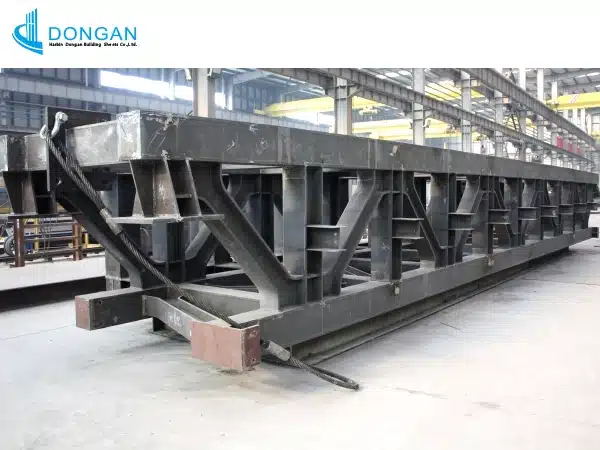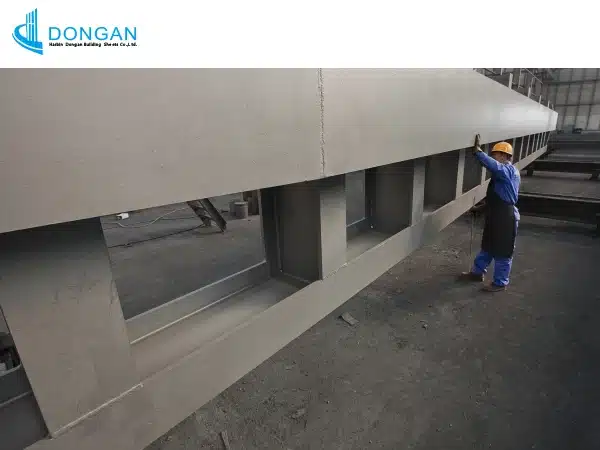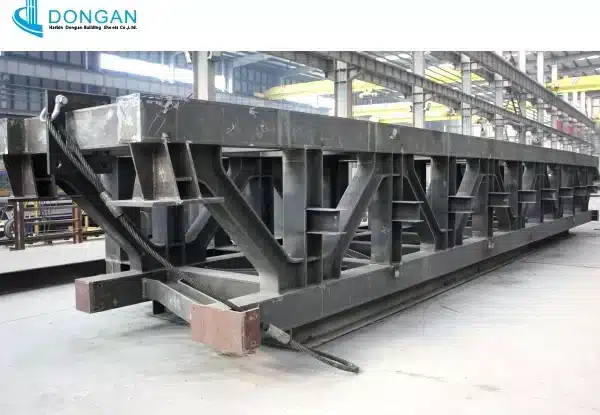In engineered steel structure buildings, strength, efficiency, and versatility are crucial. Among all structural elements, the lattice column is one of the most versatile and efficient. As a basic element of steel structure systems, lattice columns have numerous advantages, ranging from less material consumption to greater ability to resist loads. This article discusses what lattice columns are, the advantages of their use in fabricated steel structure applications, design implications, and future trends in application.

What is a Lattice Column?
A lattice column is a steel column made up of steel members with joints in the form of a lattice or truss. It is not a solid steel column in the sense that it is not of the open-web design but of the open-web construction, thus reducing weight without sacrificing strength. Lattice column is extensively utilized for steel structure works such as industrial buildings, transmission towers, bridges, and long-span structures.
The composition of a lattice column will usually include:
- Chords (main load-carrying members) – Usual angle sections, tubing, or I-beams.
- Lacings or battens – Horizontal or diagonal members connecting the chords, serving to provide stability.
- Nodes – The critical joints where the lacings and chords meet are often supported.
Due to their modular nature, lattice columns are suitable for factory-fabricated steel structure systems where members are fabricated off-site and assembled on-site, thus allowing for quick build.
Advantages of Lattice Columns in Fabricated Steel Structures
There are certain significant advantages of employing lattice columns in the construction of steel structures:
1. Material Economy and Light Design
Lattice columns utilize 30-40% less material compared to solid columns without any compromise on the load-carrying capacity. This offers an economical solution for large-scale projects of fabricated steel structures.
2. Enhanced Strength-to-Weight Ratio
The open-web design withstands loads efficiently, and thus, lattice columns can withstand huge axial and lateral loads. They are ideal for high-rise buildings like communication towers and industrial buildings.
3. Ease of Fabrication and Transportation
Since lattice columns consist of smaller steel sections, they are easier to fabricate, transport, and install compared to large solid columns. This is precisely in line with the manufacturing concept of modular composite steel structures.
4. Design Flexibility
Engineers can adapt lattice columns to the requirements of a specific project by changing the spacing, shape, and thickness of the lacing members. This makes them suitable for different uses in steel structures.
5. Faster Construction
Since lattice columns are pre-fabricated, their assembly in the field can be done rapidly, which reduces construction time. A case in point is the Shanghai Tower, where the utilization of lattice-like structural members facilitated its rapid assembly.
Design Implications in Lattice Columns
With the integration of lattice columns into a steel frame, engineers need to consider the following:
1. Load Distribution
- Axial loads (vertical loads) are to be distributed appropriately by chords.
- Lateral loads (wind, seismic forces) are to be resisted by rigid lacing systems to avoid buckling.
2. Connection Details
- Lacings and chord connections are designed to avoid stress concentration.
- Welded or bolted joints should be fatigue tested, especially under dynamic loading.
3. Corrosion Protection
Lattice columns have a greater surface area exposed to the atmosphere and therefore require appropriate coating (galvanizing, painting) to prevent rust, especially in harsh environments.
4. Buckling Resistance
Thin and slender lattice columns are susceptible to buckling. Designers should optimize the anti-buckling performance of the tie rods (single diagonal tie rod, double diagonal tie rod, K-type brace).

Future Directions for Applications of Lattice Columns
The landscape for fabricated steel structures is evolving, and lattice columns will have an even greater role in the future:
1. Integration with Novel Materials
High-strength steel alloys and composite materials will possibly decrease weight while enhancing the load-carrying capacity of lattice columns.
2. Digital Fabrication and BIM
Building Information Modeling (BIM) enables precise steel structure component design and simulation, minimizing lattice column performance optimization before fabrication.
3. Sustainable Construction
Lattice columns are one of the areas of focus in green construction, with a specialization in the minimization of material waste, thereby making it increasingly sustainable. Recyclable steel is a factor that helps in its sustainability.
4. Modular and Prefabricated Growth
Off-site construction is becoming more popular, with steel structure systems composed of lattice columns being used more in high-rise and industrial buildings.
Conclusion
Lattice column is one of the most influential innovations in steel structure design that offers an exceptionally good blend of efficiency, strength, and flexibility. Its efficiencies in factory-made steel structure systems, such as material efficiency, construction simplicity, and design freedom, have endeared it to be the darling of modern construction.
As technology advances, lattice columns will become increasingly optimized by the use of intelligent materials and computer-aided manufacturing techniques. To architects and engineers interested in designing steel structure construction projects, information and utilization of the benefits of lattice columns will be a key element in building stronger, faster, and cleaner buildings in the future.
With these technologies already in hand, the construction industry is now able to further push the boundaries of what is possible with manufactured steel structure systems.






